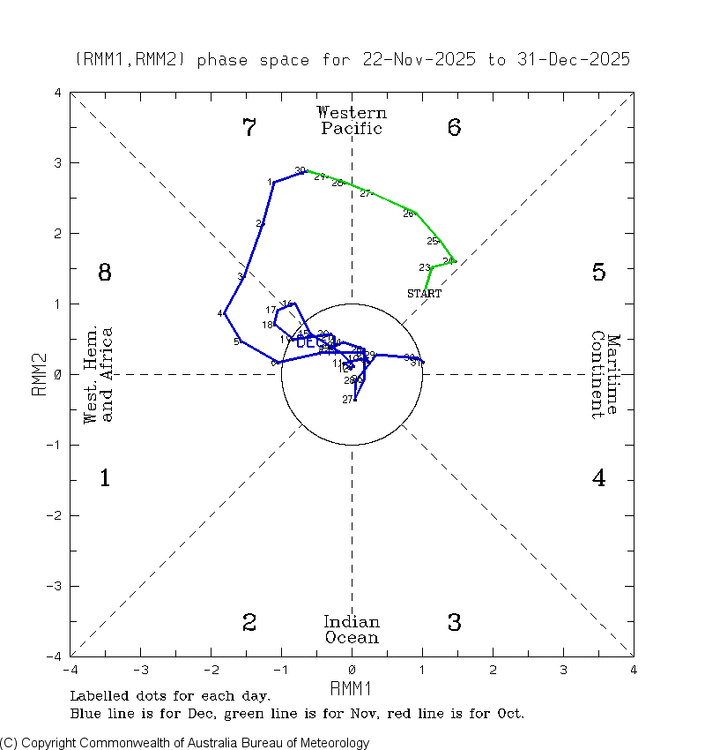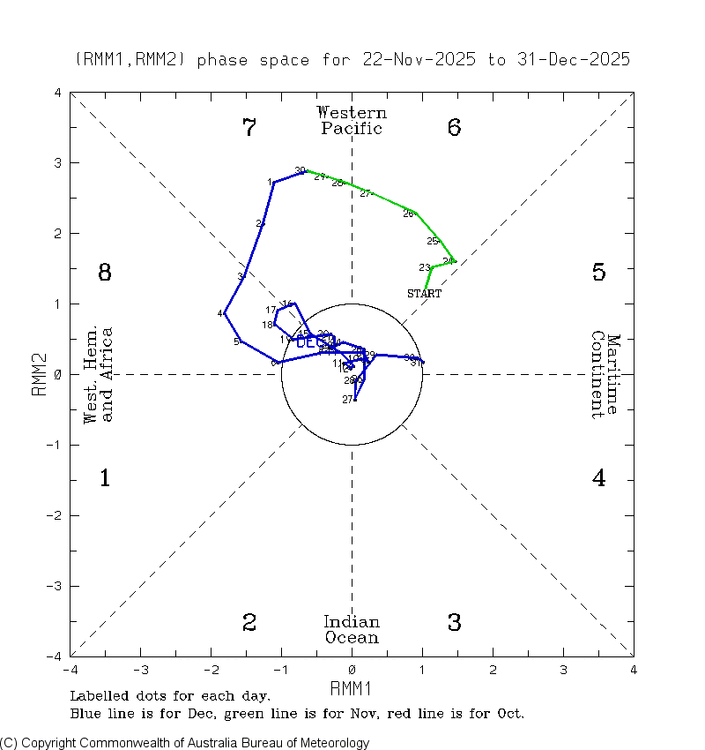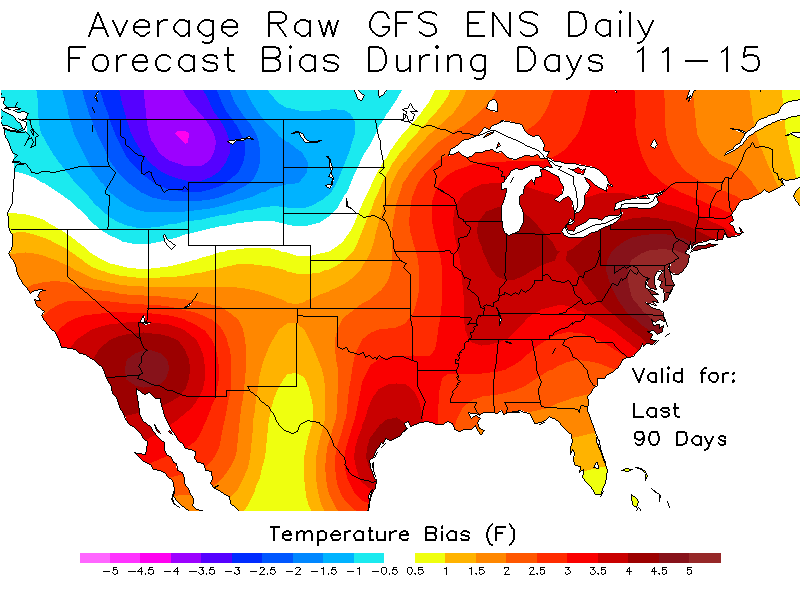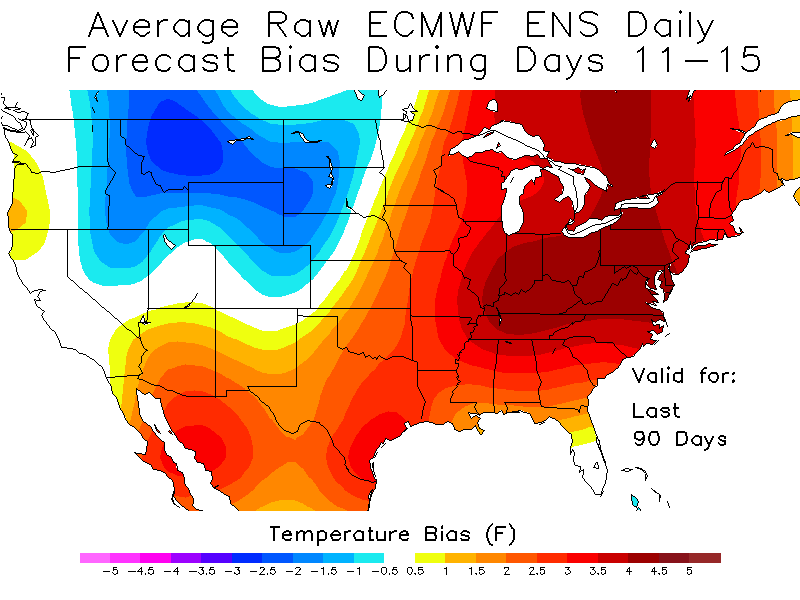
GaWx
Members-
Posts
17,826 -
Joined
Content Type
Profiles
Blogs
Forums
American Weather
Media Demo
Store
Gallery
Everything posted by GaWx
-
Coldest post Jan 6th at Chicago on GFS/GEFS thru today’s 12Z: 1/2 12Z +30/+25 1/3 0Z +29/+25 6Z +21/+21 12Z +22/+19 Same for Euro/EPS: 1/2 12Z +22/+22 1/3 0Z -15/+16 1/3 12Z +7/+17
-
Dec QBO falls some more to -26.92, the lowest on record in Dec (to 1948) vs 2014’s -25.38. This sets up the chance for a record in Jan, too, though 2015’s -26.7 likely will be close: https://psl.noaa.gov/data/correlation/qbo.data
-
Today’s ens MJO progs both later get into 6: inside circle 6 would be best for cold chance during ph 6 as just posted: also Jans with 20+ days anywhere inside circle have averaged colder than the others as I posted about before:
-
Well, as it turned out again using GSP, El Niño ph 6 near or inside the circle in Jan turns out to avg cold just like La Niña inside Jan ph 6: Phase 6 during Nino Jan 77 6-9, 11-13: -7, -4, -11, -7, -20, -15, -13 (-11 W) 78 4: -6 (-6 W) 80 31: -13 (-13 W) 83 10-1: +1, +3 (+2 W) 92 3-8: +10, +13, +8, +6, +2, +1 (+7 W) 95 28-30: +1, -6, -7 (-4 W) 98 1-3, 21-2: -12, 0, +6, -3, -3 (-2 M)(-3 W) 03 10-12, 23-5: +5, -6, -10, -16, -19, -10 (-4 M)(-15 W) 05 9-19, 31: +10, +11, +11, +18, +22, +7, -1, -2, -13, -15, -14, -1 (+3 M)(-1 M) 07 9-13, 15-6, 24, 26-31: -1, -3, -4, +5, +16, +21, +5, -3, -5, +5, -2, -15, -2, -12 (+6 M)(-5 W) 10 20-1: +15, +3 (+9 M) 15 9-14, 28-31: -8, -11, -10, -1, -1, -4, -3, -2, 0, -4 (-6 S)(-2 W) 19 2-3, 25-30: +10, +11, -4, -5, -3, +1, -3, -9 (+11 S)(-4 S) 24 24-7: +6, +17, +21, +12 (+14 S) So, there were 20 Nino Jan ph 6 periods: 10 W: 3 MB, 4 B, 2 N, 1 A; avg -158/36 = -4.4 for weak! 6 M: 1 B, 2 N, 2 A, 1 MA avg +43/27 = +1.2 for moderate 4 S: 2 B, 2 MA +19/18 = +1 for strong 81 days BN 39 NN 16 AN 26 -66 cumulative or -1/day overall but cold concentrated when near/inside circle (-4 there vs +1 outside) similar to La Niña! For La Niña, it was overall -2/day with it averaging -5/day near/inside circle and +1 outside. So, the BAMwx idea of a cold E US during ph 6 in Jan in -AAM works out only for weak/mainly inside the circle and Nino is similar.
-
As we look ahead to Jan, here’s the wrap for Dec MJO: the last 12 days (12/20-31), which covered the torch period, turned out to track in 7-6-4-3-5, not well predicted by the models and which is typically not a cold path and can easily be mild: The coldest day of the month in the E US was during phase 8 and phase 8 overall was the typical cold. It never was able to get into 1 and instead took a detour across eventually to 5! Nothing even close to that had been predicted. Remember all of those endless ph 8 progs?
-
As we look ahead to Jan, here’s the wrap for Dec MJO: the last 12 days (12/20-31), which covered the torch period, turned out to track in 7-6-4-3-5, not well predicted by the models and which is typically not a cold path and can easily be mild: The coldest day of the month in the E US was during phase 8 and phase 8 overall was the typical cold. It never was able to get into 1 and instead took a detour across eventually to 5! Nothing even close to that had been predicted. Remember all of those endless ph 8 progs?
-
The reason for these Chi coldest of run posts is because of it being a source region since a lot of SE cold travels from that area. It’s extremely hard for the SE to get colder than Chi (outside of mtns) as the air traveling from there modifies as it comes SE and even more w/o snowcover.Whereas the 0Z GFS suite stayed the same (quite mild) as the 12Z despite the Euro suite getting sig. colder post Jan 6th, the 6Z GFS suite did trend a notable amount colder even though it’s still mainly mild (normal lows upper teens) (ens means are the most important that far out) Coldest post Jan 6th of GFS/GEFS:12Z +30/+250Z +29/+256Z +21/+21
-
Followup: 0Z vs 12Z Chicago lowest min (F) Jan 6+: Euro: -15 vs +22 EPS: +16 vs +22 GFS: +29 vs +30 GEFS: +25 vs +25 So, whereas Euro suite is colder, GFS suite is unchanged
-
ATL 15 coldest winters since 1950-1/SN 1957-8 2.7” incl IP 1960-1 0.1” 1962-3 T + major ZR 1963-4 3.6” 1965-6 0.7” 1967-8 4.2” + major ZR 1968-9 2.2” 1969-70 0.6” 1976-7 1.0” + ZR 1977-8 0.3” 1978-9 4.6” IP + major ZR 1981-2 7.7” incl. IP + ZR 1983-4 1.3” 2009-10 5.3” 2010-1 7.1” Avg 2.8” SN/IP + ~avg ZR 2.8”/1.9” = 1.5 times the 1.9” normal ————— Mild winters with 2”+: only 5 (~20% of them) 1951-2 3.9” 1990-1 2.1” 1991-2 5.0” 2001-2 4.6” 2017-8 4.7” NN to cold winters with 2”+: 26 (~50% of them) NN and BN similar chance for 2”+ So, for ATL, having a mild winter (2+ F AN) significantly cuts down on the chance for normal SN. But NN doesn’t at all. Keep in mind that often much of ATL’s snow in a season comes from just one storm.
-
ATL 15 coldest winters since 1950-1/SN 1957-8 2.7” incl IP 1960-1 0.1” 1962-3 T + major ZR 1963-4 3.6” 1965-6 0.7” 1967-8 4.2” + major ZR 1968-9 2.2” 1969-70 0.6” 1976-7 1.0” + ZR 1977-8 0.3” 1978-9 4.6” IP + major ZR 1981-2 7.7” incl. IP + ZR 1983-4 1.3” 2009-10 5.3” 2010-1 7.1” Avg 2.8” SN/IP + ~avg ZR 2.8”/1.9” = 1.5 times avg ————— Mild winters with 2”+: only 5 (~20% of them) 1951-2 3.9” 1990-1 2.1” 1991-2 5.0” 2001-2 4.6” 2017-8 4.7” NN to cold winters with 2”+: 26 (~50% of them) NN and BN similar chance for 2”+
-
That all looks pretty good at H5. But keep in mind that the Midwest only barely cools back down to NN briefly at best during these periods on that Euro run with AN dominating. And the GFS never even gets down to NN. Hopefully, the Euro and especially the GFS will cool off substantially on the ground in the Midwest as we get closer just as occurred for as recent periods as 12/28-today.
-
12Z Euro/GFS coldest low at Chicago 1/6-1/18: 22/30 12Z EPS/GEFS coldest low at Chicago 1/6-18: 22/25 Normal low 20-18 Not good for SE cold prospects. So, hopefully they’re going to turn out way too warm like 12/28-1/1 and earlier periods did. We’ll see. If not, it’s going to be very hard for the SE overall to get substantially cold before 1/20. Those 90 day bias maps had Chicago too warm by 4 F for the 11-15 fwiw:
-
Dec ‘25 will end up cooler than +3.9F once Dec 29-31 are added. Why? Because Dec 29-31 averaged NN to slightly BN vs 1991-2020 climo overall based on my rough est. That could be as cold as ~30 for those 3 days. So, the question isn’t if it will end up cooler because it has to based on the above. The question is how much will it bring down the +3.9. Roughly, you’d be adding a 10% weighting with as cold as ~-1 (based on 1991-2020 anomaly) to a 28 day of +3.9. That would come out to ~+3.4 IF the last 3 days were really -1. If it goes back down to ~+3.4, then it could also end up cooler than 1939, something @TheClimateChangerand I have been discussing. Even if Dec 29-31 averaged near 0 anomaly, that would still bring Dec as a whole down to +3.5, still quite possibly cooler than 1939 in the absolute and definitely much cooler for the anomaly vs appropriate climo for each period as 1939 was >+5.5. Also, 2015 may turn out warmer. So, 2025 could come in 6th or so. This chart only goes through 2021: Edit: note that per this chart that 1939 was >+5.5 F vs its climo and 1957 was ~+3.9. So, 2025 anomaly also could come in cooler than 1957’s anomaly. So, 2025’s anomaly vs its climo could come in 7th.
-
Today’s EPS and CFS are also going to ph 6 mid Jan. BAMwx posted that phase 6 in -AAM during Jan has been very cold in the E US, with the most intense cold in the interior SE (see lower right in image just below), which to me was very counterintuitive. So, I needed to know the answer. Now it’s even more important to know as the move to ph 6 midmonth now has increasing model support. The following are results of my research done on Tue, which looked at GSP, a station in that coldest (pink) area, during La Niña: Niña Year….# phase 6 days…avg anomaly 1975…3…-8 M 1976…13…-9 W-S 1989…3…+8 M 1999…3…+2 M 2000…3…-4 W 2006…6…+3 S 2008…3…+8 S 2009…6…+1 W-M 2011…12…-7 W-S 2012…19…+1 W-S 2017…2…0 W 2018…3…-2 S 2021…8…-1 M-S 2022…4…-9 W 2025…2…-5 W W weak (mainly in or near circle), M mod., S strong 91 total days (big sample) ————— So, 15 cases of ph 6 during Nina Jans: 3 MBN 3 BN 6 NN 1 AN 2 MAN ——————— - These La Nina Jan results weren’t at all what I would have expected for phase 6, one of the 3 mild Jan phases in the SE averaged out over all years: - Though there’s not surprisingly lots of variability, GSP did average 2 BN. Before seeing BAMwx’s post I never would have expected this. However, it should also be noted that BAM’s -6 to -7 for GSP is at the same time significantly too cold. - Only 3 of the 15 Jan cases were AN to MAN: 1989, 2006, and 2008. These were all M to S intensity (intuitive). - So, none of the last 8 were mild as there were 5 NN and 3 BN (2011, 2022, and 2025). These also averaged 2 BN. The weakest 3 averaged a solid cold 6 BN. - Thus if phase 6 continues to look more likely for midmonth, it will be interesting to see whether or not the NN to cold dominance works out in the SE (and E overall by association), especially if the bulk of ph 6 turns out to be anywhere from inside the circle to near/just outside the circle. @donsutherland1
-
Yeah, the 12Z EPS gives me hope. About all we know with decent confidence based on model consensus is that there will probably be a 4-5 day long torch (sound familiar?) mainly mid to next week. That covers Jan 6-10. After that, it’s a crap-shoot. If the 12Z EPS were to verify well, then things could be getting more interesting starting the week after next regardless of what todays EWs showed. By the way, the EW is essentially an extension of the 0Z EPS.
-
Folks should remember that the models were significantly too warm in advance of the 3 weeks starting Thanksgiving Week as well as for Dec 29th through today. So, they had been way off almost all in the too warm direction when they were off late Nov through today. They did a good job for the historic Dec torch well in advance.
-
Happy New Year! Please post your Jan obs as well as current/recent wx occurring anywhere. Regardless of what the rest of Jan has in store, I’m outside enjoying another stellar day thanks to Canada!
-
They still have value for guidance. Some runs/periods are better than others. At times they’ve been stellar while at other times they’ve been in the commode. Overall they’re the best that we have for the long range, which is very hard for models to forecast. But in this case, the medium range of the Euro has been in the commode with too cold apparently! Before this, the medium range of models had been too warm for that cold 3 week period and for 12/29-1/1. The models did well for the Dec torch.
-
@NorthHillsWxHow about this bleak that covers, next week (Jan 5-11)? Four days ago: encouraging Today: worse than the commode, this is in the hot-tub: this is Torch #2
-
The “Bleaklies” (thanks, ColdRain, for coming up with that hilarious nickname) are almost the polar opposite of last year for the SE at this time. Related to your mention of the Euro, one “bleak” (Jan 12-18) has gone from this encouraging run just two days ago: To the commode today:
-
On this Happy New Year’s Day, I refuse to talk at all about the Bleaklies being almost the polar opposite of last year for the SE at this time. They’re not called “The Bleaklies” for nothing. So, what they’re showing shouldn’t surprise anyone. So, I won’t talk about them. They’re not bad at all though for the NE overall with NN averaged out per the in-house maps. I changed my mind. I’ll talk about one bleak: Jan 12-18 has gone from encouraging just 2 days ago To the commode today:
-
@TheClimateChanger I had as you know estimated that the MTD mean would rise to ~38.2 F as of 12/27. However, I then estimated as you also should know a 31F avg for 12/28-31 allowing the full month to end up at ~37.2. But after seeing the image below showing the MTD was very surprisingly to me still up at 38.13 as of 12/29, I now see no way that it will fall back to ~37.2. I had also said I saw ~no way that the full Dec would be warmer than the 37.75 of 1939. Now with this updated info, I can no longer say that as it looks like it will be a close call to 1939.
-
Hey Chuck, I’d say no. It’s hard for NG to bake in an extreme that’s essentially in fantasyland/during when model skill is pretty limited. So, I feel confident that it would rise substantially in advance of the very cold should it actually start to show up in late week two of the EPS and GEFS means or even in week 3 of the EW/ext GEFS in the bulk of the E US. However, even if that were to occur, there’s the possibility that it could fall a good bit more before the extreme cold shows up and prices start to rise. The ensemble mean HDDs continue to drop. The 18Z GEFss lost a whopping 14 HDDs vs the 12Z! But even though HDDs keep dropping, the trajectory continues to show a sharp climb late in week 2 to NN:
-
Folks, I recommend that snowman and others not look at the Euro Weeklies today. I’d instead go outside and enjoy the fantastic Canadian air! And Happy New Year! May 2026 be dominated by more Canadian air! Keep in mind that the EW are essentially the extended 0Z EPS. The 12Z EPS trended better with the western ridge and that won’t be reflected on the EW.







